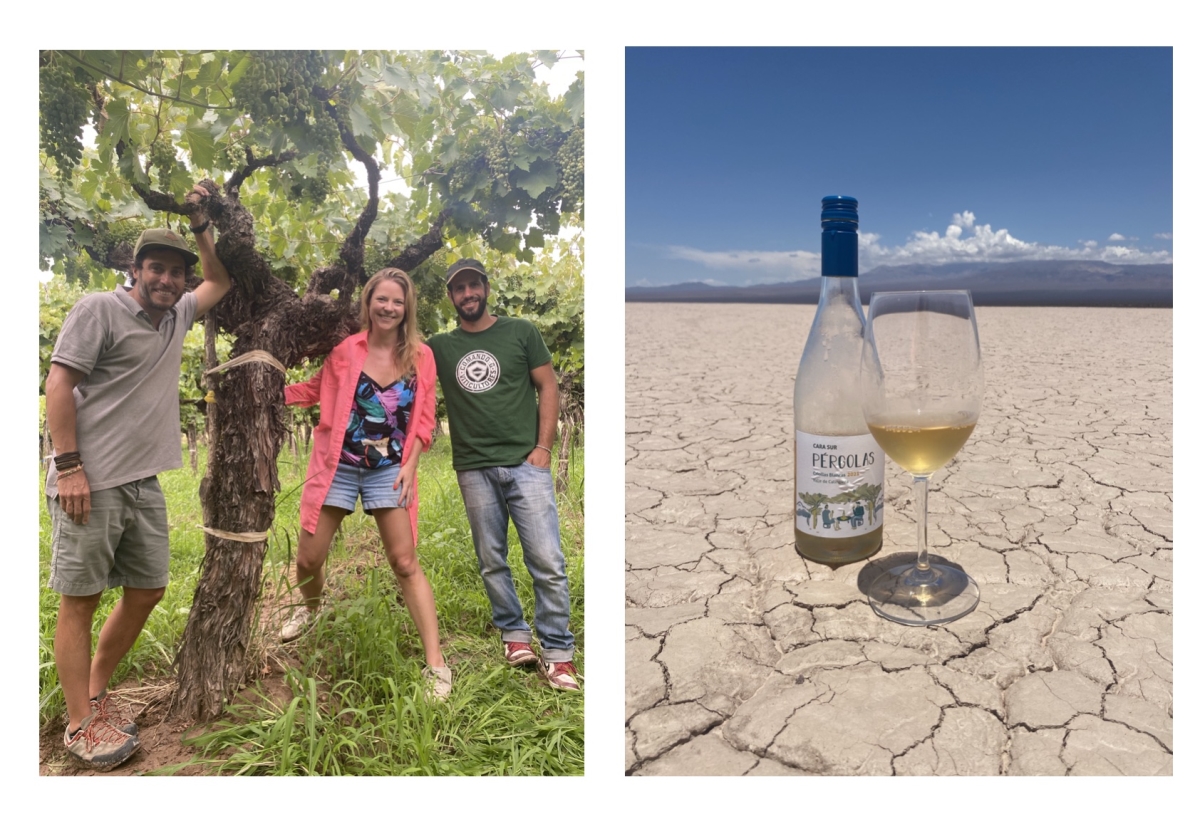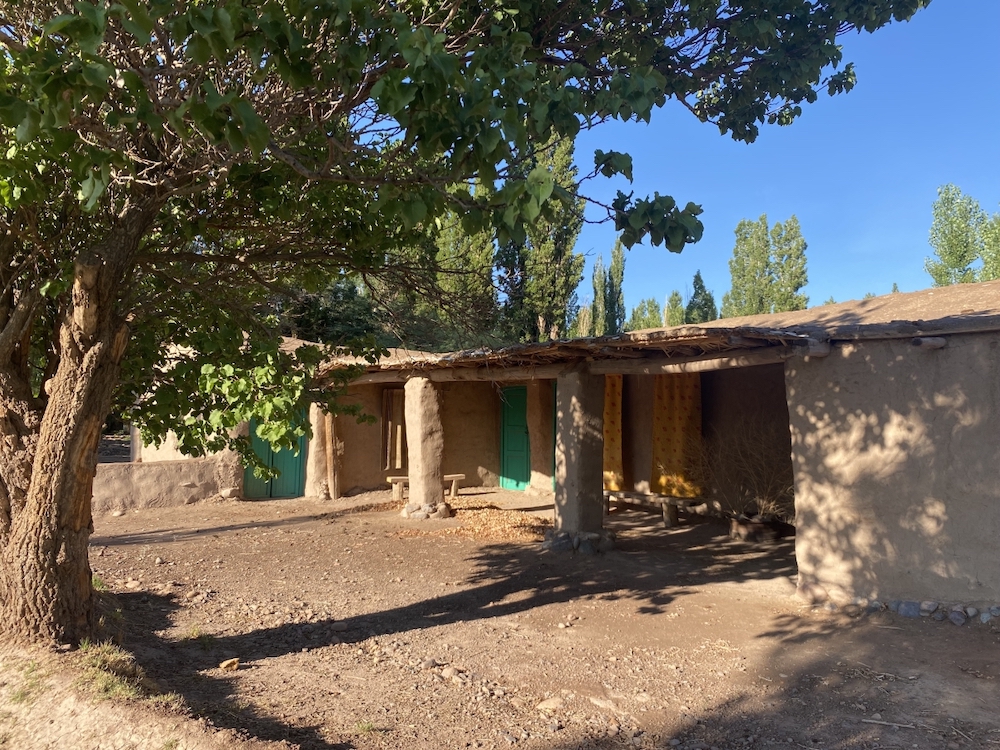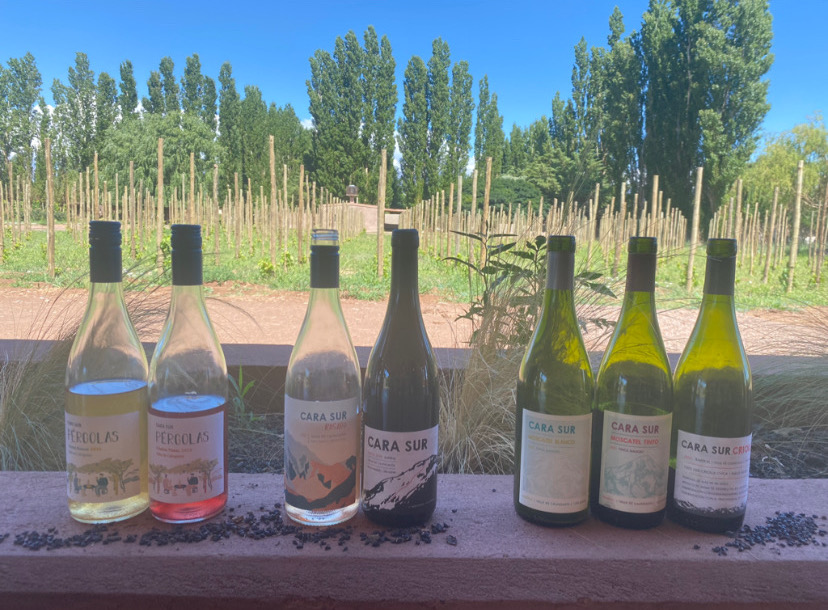Discover our guide to San Juan’s wine region of Barreal in Calingasta Valley through the vision and wines of its leading producer, Cara Sur
A true oasis in the desert, Barreal is in the proverbial middle of nowhere. Three hours from the city of Mendoza and three from the city of San Juan, it is in the Calingasta Valley — one of Argentina’s most isolated wine regions only accessible by a dirt road. That isolation brings challenges, but it also means that Barreal and its heroic viticulture has been preserved in time. Barreal offers wines that are unique in their mountain identity and Criolla ancestry.
The wine region of Barreal: A land of sun, wind, vines & mud
If you look at Calingasta Valley from above, it is a solitary snake of green in the middle of a desert landscape. This narrow oasis hugs the Los Patos River running 40 km between the towns of Barreal and Calingasta with a green corridor of vines, garlic plantations, potato fields and apple orchards. The villages are a chaos of green and terracotta: lush green plantations planted between mud roads and terracotta-coloured houses constructed of adobe mud bricks.
Visiting the town of Barreal is like taking a step back in time not only because of the unhurried pace of life but the simplicity of the earthen architecture too — unaffected by the modernisation and urbanisation that changed the landscape of other towns in Argentina several decades ago.
An oasis in the truest sense of the word, if you travel beyond the green fringes of the valley you’ll enter the ochre, white and dark silver foothills of the Andes mountains. Or head south and you’ll arrive to the large white mirror of the Pampa del Leoncito, a large basin of dried white clay which is also known as Barreal Blanco, or white Barreal. This radiantly white plain spans 12 kilometres by five kilometres and throws up mirages in the sunlight, appearing as a shimmering lake from the distance — a reality-quaking difference to the cracked dry land under foot. Barreal is certainly a world away from anywhere else.
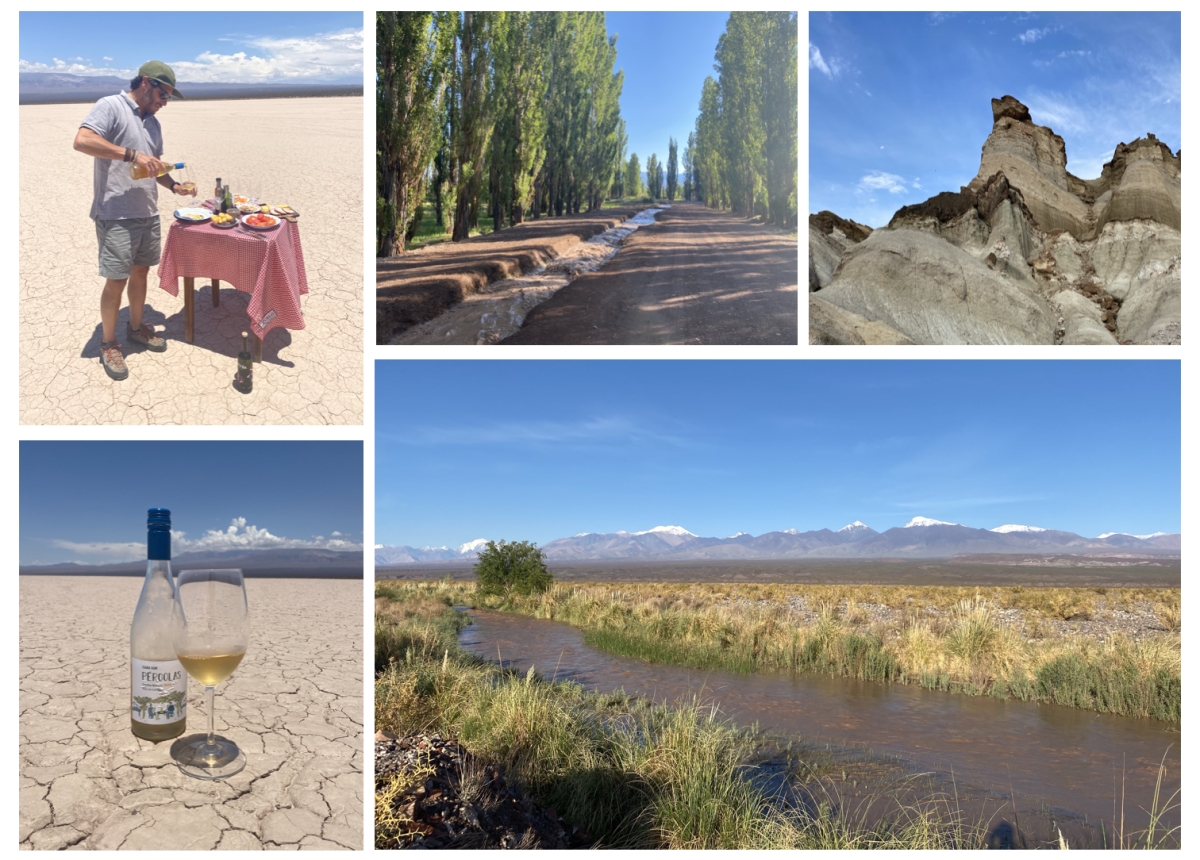
“The search of Cara Sur is to rescue and revalue these old vines, this forgotten valley and these native varieties,” explains Sebastian, who has been making the wines with Pancho for almost a decade now. “As well as the old vines of the vineyards we are using, we are also working with local families to use their old vines which they have in their homes and gardens — there are a lot of very old pergolas which have these interesting Criolla varieties too.”
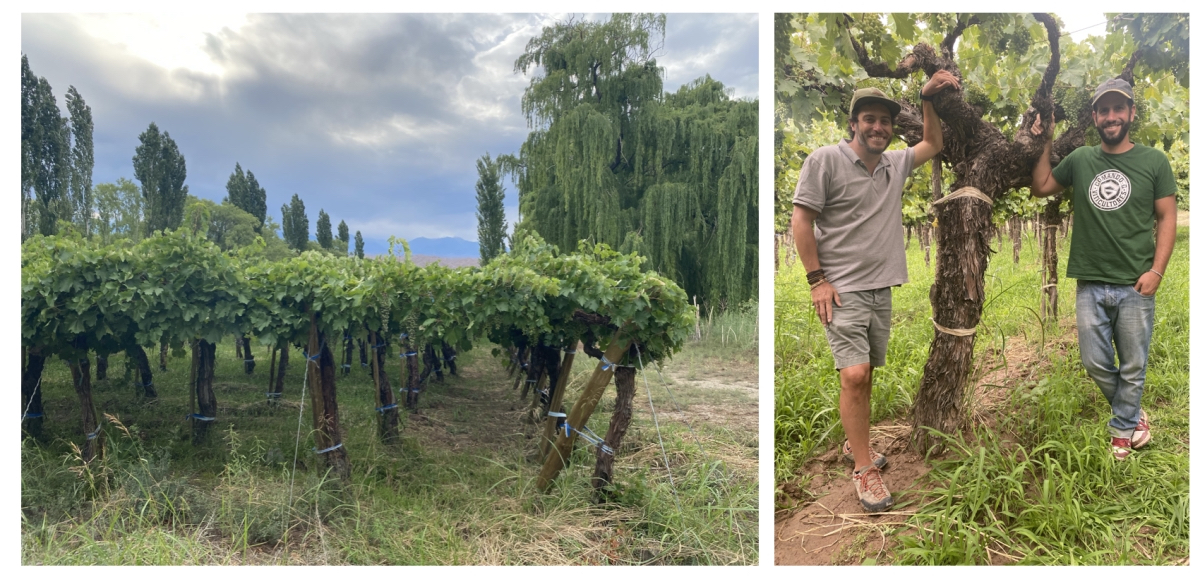
“I think the Criolla Chica is really special as a variety because it has these very fine tannins which give the palate a lot of length,” explains Sebastian, who has been separating the Criolla Chica plants from within parcels in order to vinify them separately. “It is very rare to find Criolla Chica in Argentina now, and so we are also planting more. Although it will take many decades for those vines to come of age, those vines will be for our future generations while we will continue to care for these old vines left from the generations before us.”
Respecting the quality and unique identity of the old vines, Criolla varieties and climate, their winemaking approach is respectfully simple — using low intervention and natural winemaking, and ageing in concrete in order to not interfere unnecessarily with the character of the old vines and grapes. “We don’t have electricity to use in our winemaking either,” explains Pancho, who built their new winery just behind his family home in Barreal, where he grew up as a child and adult. “But because we have such cool nights here in Barreal, you really don’t need any temperature control in the winery. In fact, if anything, we sometimes have more problems when it gets too cold!”
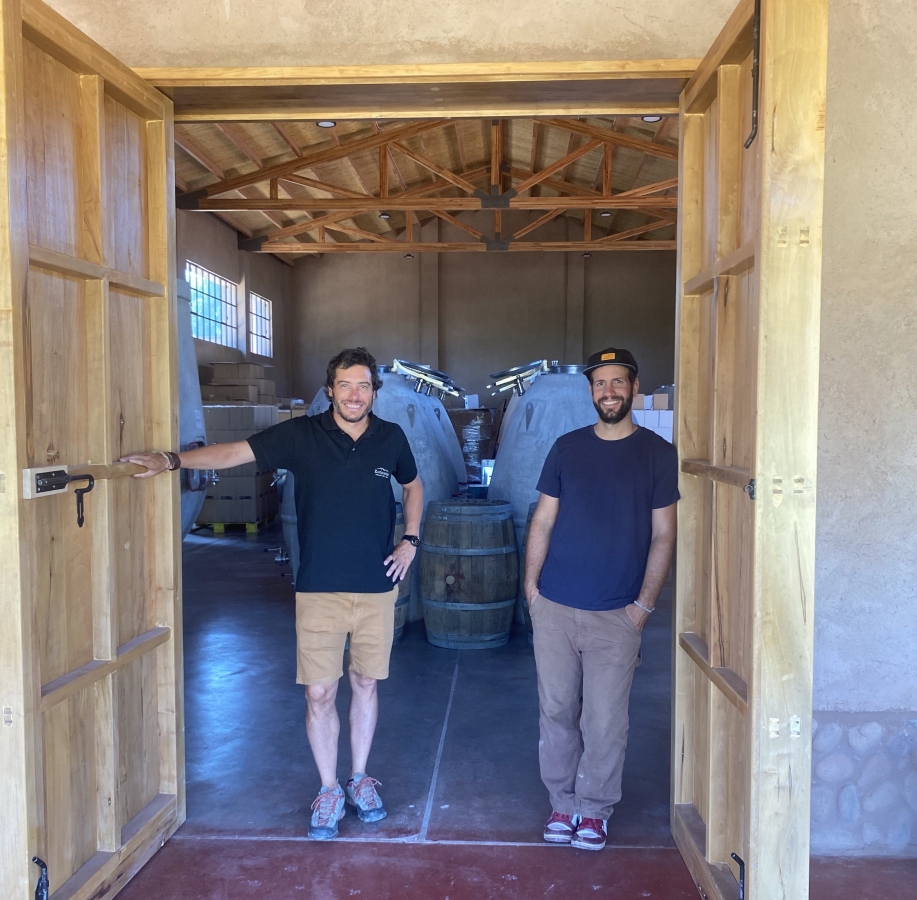
As well as these cool nights, which offer good acidity in the grapes and wines, another important aspect of the climate for Cara Sur wines is that it is relatively easy to cultivate flor yeast in the wines — a technique which they use for all their white wines. “Flor grows really easily here, even for red wines in fact,” adds Pancho. “We like to use flor in all the white wines because it protects them from oxidation and adds more complexity to the palate.”
The biological ageing under flor is perhaps most notable in their white Criolla blend in the Pergolas range. Made from a blend of white Criolla grape varieties but principally Torrontés San Juanino, this variety is known as being less expressive than Torrontés Riojano but with more body. The flor ageing gives it even more texture in the palate, resulting in a tangy and refreshing white. It’s the perfect sort of white wine to enjoy chilled with a plate of local goat cheese.
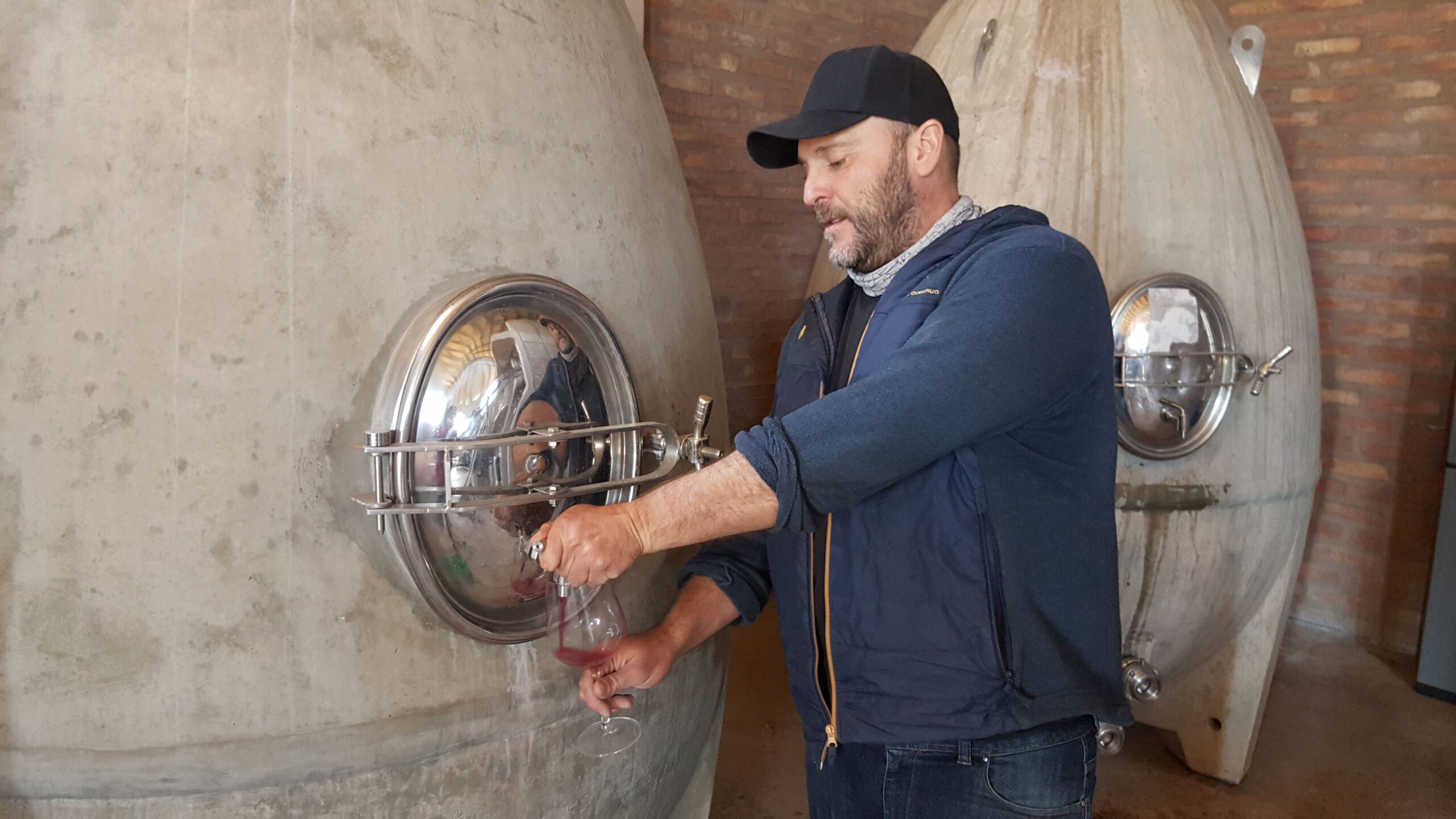
Ageing under flor is also what another small producer in Barreal, Andres ‘Vasco’ Biscaisaque, focuses on — also with his Torrontés blend. ‘El Vasco’, as he’s known by his friends, started working with Sebastian and Pancho at Cara Sur several years ago and became enamoured with the old vines and potential of Barreal that he branched out to start his own boutique wine project, Finca Los Dragones. Today he has not only the biologically-aged Torrontés but also red Criolla and Syrah blends, and a really great Torrontés-Bonarda deep rosé style Claret. These are also wines worth hunting down if you make an escape to Barreal, and show how an exciting movement is growing in this special place.
One of the silver linings in fact of the pandemic is that, with the national borders shut, many Argentineans started exploring their own land — and making their way up to Barreal to discover this desert oasis. There are a host of charming B&Bs in the town but one of the highlights is the Posada Paso de los Patos. With villas made of adobe and decorated with local textiles and art works, each one looks out to the mountains in the distance with the river running in front. The perfect panoramic view is actually one of the few places in Argentina you can see the great Mount Aconcagua.
It’s an ideal place to drink a glass of local old vine Criolla wine, and enjoy getting lost in time in this mesmerising mountain oasis — Barreal.
Video interview from the vineyards of Cara Sur in Barreal, San Juan
Top wines to try from Barreal, Calingasta Valley
 Cara Sur, Parcela La Totora
Cara Sur, Parcela La Totora
This is Cara Sur’s gran cru of Criolla Chica — a selected parcel of old vines which offers a mouthwatering wine of mineral nuance, mountain herbs and wild strawberry. It is a very sophisticated Criolla which would charm any Pinot Noir drinker…
Cara Sur, Parcela Blanco
This is as yet unnamed… but I can’t wait to write about it. A selection of their unique Moscatel Blanca vines, this is beautiful. A lifted nose of honeysuckle, wild mountain oregano and basil with a refreshing, grippy and tangy finish. Very exciting.
Finca Los Dragones Alfil
A deep cherry-coloured wine made from Torrontés Mendocino with a touch of Bonarda and Croilla Chica, this is a pretty cool deep rosé wine. Vinified in clay, it is fresh, juicy and bright with a delicate spine of tannin.
Cara Sur, Pergolas Criollas Blancas
With mainly Torrontés San Juanino and a blend of other white Criolla varieties, this cloudy and unfiltered wine develops under a veil of flor and has enticing notes of chamomile and salted pears with freshness and grip. Drink chilled on a sunny afternoon!
Cara Sur Tinto
Made with old vine Bonarda as well as an assortment of old Italian reds including Barbera, this is a fresh mountain red with notes of jarilla and black forest fruit. It has tension in the palate and a gravelly texture, very inviting.
Finca Los Dragones Torrontés
Skin-fermented Torrontés Mendocino that has been aged for six months under flor to give it a very nice yeasty nose. Grippy and fresh with some nutty notes on the finish.
- Learn more about the old vines of South America through our Old Vine Register
- Read more about Criolla varieties in our Essential Guide to the Criolla Grape Varieties
